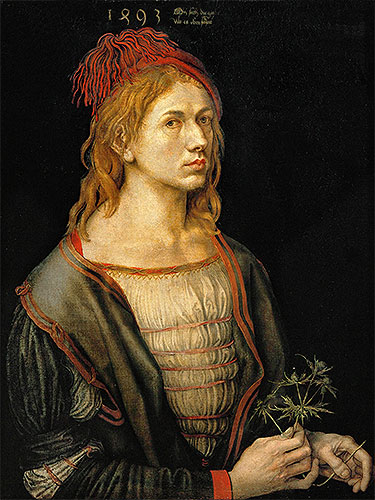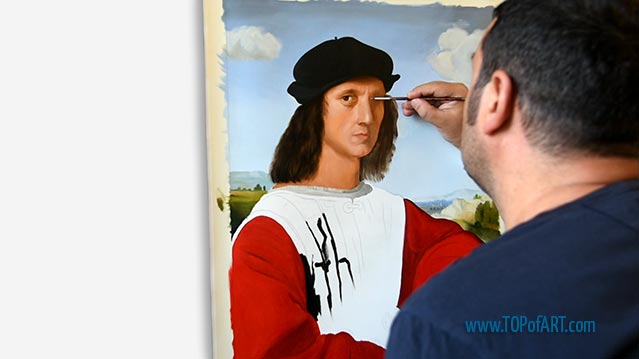Self Portrait with a Thistle, 1493 Albrecht Durer (1471-1528)
Location: Louvre Museum Paris FranceOriginal Size: 56.5 x 44.5 cm
Oil Painting Reproduction
If you want a different size than the offered
Description
Painted by European Аrtists with Academic Education
Museum Quality
+ 4 cm (1.6") Margins for Stretching
Creation Time: 8-9 Weeks
Creation Process
We create our paintings with museum quality and covering the highest academic standards. Once we get your order, it will be entirely hand-painted with oil on canvas. All the materials we use are the highest level, being totally artist graded painting materials and linen canvas.
We will add 1.6" (4 cm) additional blank canvas all over the painting for stretching.
High quality and detailing in every inch are time consuming. The reproduction of Albrecht Durer also needs time to dry in order to be completely ready for shipping, as this is crucial to not be damaged during transportation.
Based on the size, level of detail and complexity we need 8-9 weeks to complete the process.
In case the delivery date needs to be extended in time, or we are overloaded with requests, there will be an email sent to you sharing the new timelines of production and delivery.
TOPofART wants to remind you to keep patient, in order to get you the highest quality, being our mission to fulfill your expectations.
We not stretch and frame our oil paintings due to several reasons:
Painting reproduction is a high quality expensive product, which we cannot risk to damage by sending it being stretched.
Also, there are postal restrictions, regarding the size of the shipment.
Additionally, due to the dimensions of the stretched canvas, the shipment price may exceed the price of the product itself.
You can stretch and frame your painting in your local frame-shop.
Delivery
Once the painting Self Portrait with a Thistle is ready and dry, it will be shipped to your delivery address. The canvas will be rolled-up in a secure postal tube.
We offer free shipping as well as paid express transportation services.
After adding your artwork to the shopping cart, you will be able to check the delivery price using the Estimate Shipping and Tax tool.
Museum Quality
The paintings we create are only of museum quality. Our academy graduated artists will never allow a compromise in the quality and detail of the ordered painting. TOPofART do not work, and will never allow ourselves to work with low quality studios from the Far East. We are based in Europe, and quality is our highest priority.
Additional Information
The composition is deceptively simple, with Dürer filling the frame in rich, Renaissance attire - a red hat, a finely detailed shirt with its gathered pleats, and a dark robe trimmed in red. His ceremonial clothing emphasizes not just his status, but the new role of the artist as an intellectual figure. The thistle, delicately held in his hand, could symbolize suffering or love, but it’s more likely a subtle nod to his meticulous skill in capturing the natural world in fine detail.
Dürer’s technique is masterful. The soft shading of his skin contrasts with the deep folds and textures of his clothing. The hands, always a challenge for an artist, are beautifully rendered with care and sensitivity. His fingers grip the thistle gently, yet confidently, mirroring the balance of strength and finesse that defines the whole portrait. The dark, plain background brings our focus entirely to the figure, stripping away distractions and forcing us to confront Dürer himself. This is not just a portrait; it’s a manifesto of Renaissance humanism, a proclamation of the artist as a man of significance, intelligence, and vision.






